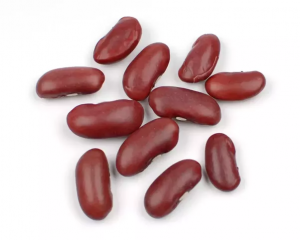Intriguing, inspiring and interesting, urology is a great profession for a person in love with solving problems, tackling embarrassing situations, saving lives and relating to the stories of humanity. As a urologist, you see people with awkward urine leaks, inability to get an erection, devastating genitourinary cancer and many other depressing and humiliating conditions every day. Fixing these issues and restoring sparkle, enthusiasm and joy to their lives is tremendously rewarding. It’s a unique position that also provides you with the opportunity of continuous learning and satisfaction. It’s an occupation I dreamed of as a child and which I now cherish as a doctor.
Path to Urology
When I completed my undergraduate studies at Cornell University’s prestigious Ivy College, achieving honors of cum laude, I opted to pursue a urology residency to specialize in a field with so many issues to be tackled but so few medical students turning to it.
For a six-year training span that took me to Princeton Medical Center, The Cancer Institute, New Jersey, and Robert Wood Johnson University Hospital, I honed my skills in all aspects of male and female urology, urologic oncology and robotic surgery. With this extensive training and experience I was able to achieve a double certification in 2006 by Female Pelvic Medicine and Reconstructive Surgery and the American Board of Urology. It took me just 5 years of practice to be honored by my peers for excellent work, being elected the Chief of Surgery at the Medical Center of Trinity, originally the Community Hospital.
Areas of Expertise
I routinely tackle the most common urological problems, such as kidney stones, urologic cancers, UTIs, urinary incontinence, enlarged prostate and overactive bladder. As an expert in no-needle, no-scalpel vasectomy, I also perform quite a number of vasectomies in my office. Likewise, because of my skill and experience in advanced laparoscopic technologies and da Vinci robotic I handle several cases of urogynecology and urologic oncology in Florida.
Some of the procedures I perform routinely include sacrocolpopexy (minimally invasive repair of vaginal prolapse), hysterectomy and sling procedures for urinary incontinence, cystectomy (bladder removal) in those with significant bladder cancer, nerve-sparing prostatectomy (prostate removal) for prostate cancer, nephrectomy (kidney removal) to treat kidney cancer, ureter repair and reconstruction in case of obstruction or injury, adrenalectomy (adrenal gland removal) and pyeloplasty (reconstruction of renal pelvis). I am also a robotic surgery instructor and an expert reviewer with C-SATS certification.
Job Satisfaction
As a urologist, the work hours are often long and I usually find myself in situations that are stressful. But to persevere through them and consistently provide safe, timely and effective remedies to those in great need is incredibly satisfying and keeps me going. The challenges just help bring out the best in me and make my job even more fulfilling. Urology is deeply fascinating as I am not just able to tackle embarrassing problems, but also to examine the urinary system and administer treatment with some of the most advanced and innovative technology.
There’s never a dull moment for a urologist as you see different kinds of people and sort out different issues every day, a guarantee that each day will bring some kind of excitement. You also get the opportunity to know these people, earn their trust and build very close, long-term relationships. I find it quite gratifying to care for patients with often devastating and humiliating issues and to see their situations improve.
Why Advanced Urology Institute
During my training years, I looked forward to an ideal workplace — one that would bring out the best of my talents, skills and experiences and empower me to provide the best possible care. And I found it in Advanced Urology Institute. At AUI, I have no administrative work to trouble me, so I spend most of my time caring for my patients and collaborating, innovating and researching for safe and effective solutions to my patients’ problems. And because AUI brings together a huge pool of skilled, creative, passionate and hard-working medical professionals, it makes it easier for me to perform at my best and to take my career to the heights I desire. I couldn’t have found a better workplace than AUI. For more information on the urological services at AUI, visit the “Advanced Urology Institute”site.


 There are many causes of kidney stones, such as dehydration, excessively acidic urine,
There are many causes of kidney stones, such as dehydration, excessively acidic urine,  Apple cider vinegar
Apple cider vinegar Kidney beans not only resemble the kidneys but also remove waste and toxins from the kidney and flush out kidney stones effectively. Kidney beans are rich in Vitamin B, fiber and several minerals which help to clean the kidney and boost the function of the urinary tract.
Kidney beans not only resemble the kidneys but also remove waste and toxins from the kidney and flush out kidney stones effectively. Kidney beans are rich in Vitamin B, fiber and several minerals which help to clean the kidney and boost the function of the urinary tract. Lemon juice is naturally acidic and increases
Lemon juice is naturally acidic and increases  Watermelon is a mild diuretic. It hydrates and cleanses the kidneys. It is also rich in lycopene, which improves cardiovascular health and ensures well-functioning kidneys. Watermelon also has large quantities of potassium salts which regulate acidity of urine and prevents stone formation. In fact, eating watermelon regularly is great for kidney health.
Watermelon is a mild diuretic. It hydrates and cleanses the kidneys. It is also rich in lycopene, which improves cardiovascular health and ensures well-functioning kidneys. Watermelon also has large quantities of potassium salts which regulate acidity of urine and prevents stone formation. In fact, eating watermelon regularly is great for kidney health. Both the juice and seeds of pomegranate contain large amounts of potassium and therefore are effective in removing kidney stones. Potassium lowers acidity of urine, prevents stone formation because of its astringent properties, curtails crystallization of minerals, and flushes out toxins and waste from the kidneys.
Both the juice and seeds of pomegranate contain large amounts of potassium and therefore are effective in removing kidney stones. Potassium lowers acidity of urine, prevents stone formation because of its astringent properties, curtails crystallization of minerals, and flushes out toxins and waste from the kidneys. Basil is an effective diuretic. It removes kidney stones and improves kidney functioning. Basil also lowers the level of uric acid in blood and improves kidney health. Its ingredients such as essential oils and acetic acid break down kidney stones and allow for smooth removal. Basil is also a pain killer.
Basil is an effective diuretic. It removes kidney stones and improves kidney functioning. Basil also lowers the level of uric acid in blood and improves kidney health. Its ingredients such as essential oils and acetic acid break down kidney stones and allow for smooth removal. Basil is also a pain killer. When dates are soaked in water for 24 hours and then consumed after seeds are removed, they are effective in dissolving and flushing out kidney stones. Dates are rich in fiber, helping to reduce the risk of kidney stones. The magnesium ingredient in dates also cleanses the kidneys.
When dates are soaked in water for 24 hours and then consumed after seeds are removed, they are effective in dissolving and flushing out kidney stones. Dates are rich in fiber, helping to reduce the risk of kidney stones. The magnesium ingredient in dates also cleanses the kidneys. Consuming tea made using dried organic dandelion or fresh
Consuming tea made using dried organic dandelion or fresh